Capable of sweeping string-like passages supporting a vocalist, punchy full-spread voicings that can rival the cannon shots of the brass section, and blistering unison and soli lines, the saxophone section is arguably the most versatile section in the big band. And on top of that section, the lead alto sets the tone for every note.
In the second installment in the “What’s The Point Of” series, let’s take a closer look at the role of lead alto in a jazz orchestra, what’s needed to succeed, and what other musicians in the band can to do support them.
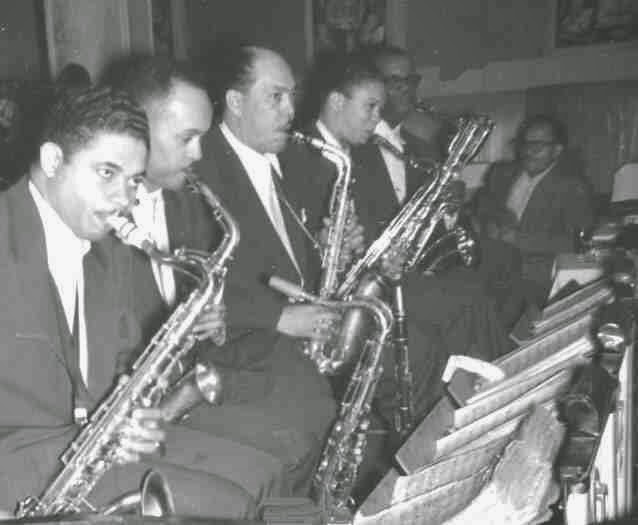
Benny Goodman’s first hit band set the standard for big bands. He had two altos and two tenors. Benny, himself on clarinet, rarely played the lead parts, usually sticking with melodies and improvised solos. This template was exported to most big bands at the time. Bari sax wasn’t as common at the time but many players had access to one and composers/arrangers liked writing for it, so within a few years the fifth sax was added, establishing the norm for the sax section that exists to this day.
Along with the sax section, the brass section evolved from four chairs up to eight, or ten in some cases! In all of these iterations and combinations of horns, one role has remained the same – the lead alto.
The great lead altos
Johnny Hodges is one of the first people to come to mind as a lead alto. He had a huge sound and a distinct tone, with an improvisation vocabulary that made him the most influential alto sax player of his generation, inspiration sax players everywhere until Charlie Parker hit the scene. Listen to his leading of the saxophone section in the linked recording. It’s as if he’s singing the parts. It’s perfectly imperfect in it’s organic sound and reliable timing. Hodges didn’t get into the studio scene as much as his contemporaries, but he remains to this day one of the most recognizable sounds in big band history.
Charlie Mariano is one of my favorites. His playing on Bill Holman’s In a Jazz Orbit record is definitive lead alto. He plays with a fullness that comes with confidence, and his articulations are incredibly consistent. From an interview with Berklee:
I was never a terribly good reader. Of course he [Joe Viola] tried to get me to read better, and I was reading okay, but I’ve never been a fantastic reader. What I was always good at was … being able to look at a piece of music and interpret it better than, you know, just actually reading it.
The distinction here between sight reading and bringing the life of the music off the page is huge. Reading, as a skill, is important. But actually making music out of the sheet music is what makes someone like Mariano so strong.
Also on that Holman record is Herb Geller, himself a major lead player from the west coast bebop days, and an often-called lead player around the planet for decades.
Willie Smith, long time lead alto for Jimmie Lunceford’s band, was another role-defining great, even if he is less known today. He had great control over the full range of the instrument, encouraging Lunceford’s arrangers, like Sy Oliver from the linked track above, to push the saxes into uncharted territory. Listen to how fluidly he executes challenging passages. Nothing phases him. At 0m50s into the recording, check out how he commands the section without ever once losing control of dynamics or time.
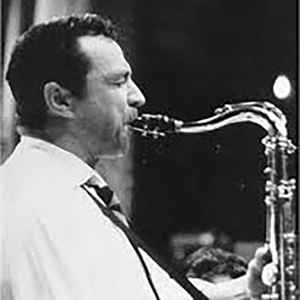
Going back to the roots of big band, the standard set by Hymie Shertzer cannot be ignored. The linked track is Sometimes I’m Happy, arranged by Fletcher Henderson for Benny Goodman’s band, which Shertzer played lead alto in for many years. Happy is an arrangement that sits on the knife’s edge between the pre-swing jazz orchestra sound of society bands and commercial music and the forward-thinking “swing” style as we know it today. Henderson splits the arrangement into the two styles, intertwining them section by section, finally giving way to a sax soli that trades phrases with itself, half “square,” half “swing.” Listen for that soli around 2m11s, and listen for Hymie’s large sound, his laid back sense of articulated 8th notes, his control over the upper limits of the instrument. He was cool, relaxed, and professional, and this became THE style for the best bands of that generation.
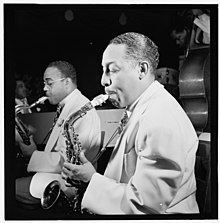
Be wary of many modern day lead alto players. Intentionally “off” intonation has become a problem these days. It’s more and more common to hear lead altos let notes slide out of tune. It’s a way to distinguish yourself as a soloist, but with less studio players around these days and more jazz soloists in ensembles, it’s a troubling trend that leads to a tonal uneasiness in jazz orchestras. Save the fluid tuning for the small group.
Another modern issue is the rapid disappearance of full bodied articulations. Short notes are too often far too short. They have no body to them, they exist as a pitched finger snap more than a melodic note of short duration. Upbeat 8th notes have become clicks. Avoid those “dit” articulations! Players these days cut notes too short, and one place to fix that is in the lead alto chair.
The top note of a voicing is the melody
This concept is best explained in the related lead trumpet article, but I’ll quote it here:
In arranging, including voicing for chordal instruments like piano and guitar, there is a near universal principle that says the top note of a voicing is what our ears interpret as the melody. This has to do with overtones, acoustics, frequencies–all kinds of Magical Science Things. Whatever is on top of a voicing is what we hear stand out; our ears grab onto that note, so it’s important that there is consistency from the one who produces it. As the top soprano instrument in the big band, lead trumpet is where the melody ultimately is conveyed.
When the trumpets are not present, it’s the lead alto that takes on this role. To paraphrase the trumpet article – it is unavoidable that the lead alto is the most important voice in the section. Because of this, every other saxophone must defer to the lead player for a sense of dynamic levels and note duration minutia. Phrasing must lock into the lead player’s breathing patterns. The length of each quarter note and 8th note must match the lead player’s sense of spacing. The speed of vibrato must match, and the sense of tonal centeredness always defers back to the lead.
Understanding lead alto is all about confidence
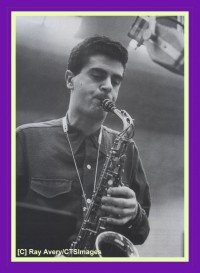
What exactly should the lead alto mindset be? First, a lead alto player can be similar to a lead trumpet in that neither musician needs to be the best improviser in the ensemble. It’s often expected that lead alto is a highly proficient improviser, but too often the lead alto’s role is leading, playing ensemble passages, written melodies, topping off a soli, or solidifying the lead trumpet one octave lower.
Instead of improvising, the skills I look for in lead alto include intonation, confidence, reading skills, and good time. Often lead trumpet and lead alto can find themselves an octave apart in shout choruses, and good lead alto intonation helps make the lead trumpet part much easier. I also want a lead alto who can play with confidence and authority, to make it clear to the other four saxes how a passage will sound. This clarity and confidence spreads to the rest of the band, whereas a weak lead alto spreads doubt and mental fatigue.
To put it another way, I want the lead alto to SPEAK UP! This doesn’t mean play louder than anyone or play as if your part is a solo part. Take the lead trumpet mindset and apply it to your section! We all need a leader in an ensemble full of music that can be interpreted an infinite number of ways, so be the person to set the standard!
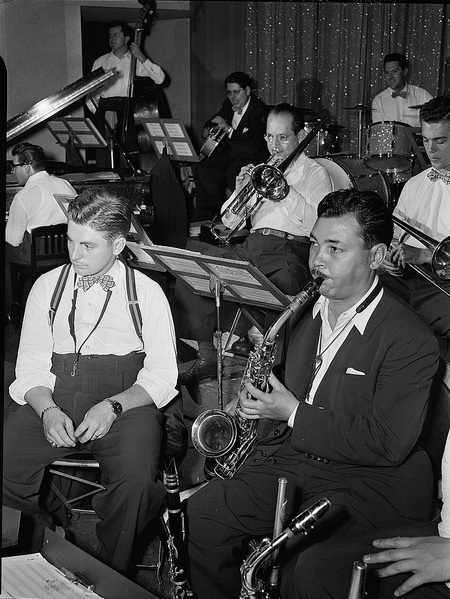
Role of 2nd alto
Alto 2 has a critical role to play. In soli writing, alto 2 often finds itself in one of two positions: 1) in mostly major and minor thirds away from alto 1, or 2) a larger intervallic distance away from alto 1 as a part of a spread voicing.
In the tighter 5-way closed soli writing, alto 1 is the melody part, but alto 2 needs to be just as tight and in time to support that melody. Without alto 2, alto 1 will feel like they are on an island, alone. A tight sax section is like fighter jets in formation at an air show. If the lead jet moves, even in the “wrong” direction, everyone can adjust and move with it. However, if the flanking member is off just a little, the lead jet cannot adjust and the aesthetic is ruined.
In spread voicings, like the below example, notice how the intervals constantly change, including 3rd, 4ths, 5ths, and 6th.
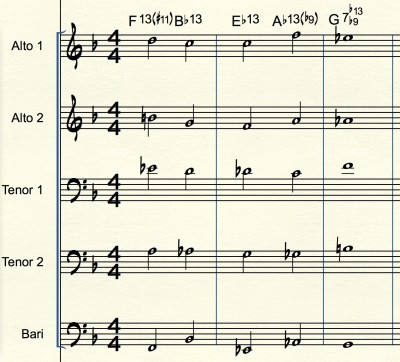
Classic spread voicings, bari on roots, tenors on guidetones, altos on tensions and other chord tones
The bari part here can listen to the bass, the tenors can lock into the bass/bari and use the piano and guitar for help, the alto 1 has the job of conveying the sense of melody their notes imply, but it is alto 2 who has the most unique job–their notes are somewhat independent, but also are constantly changing in their intervallic relationship with alto 1 and thus need careful tuning. A thoughtful alto 2 makes a strong alto 1 sound like they are in the right place.
Role of tenor saxes and baritone sax
Your jobs are similar to alto 2. The tenor saxes have a rare role in the band in that they pull their intonation guidance from two directions: lead alto and the bari sax. They are the only tenor instruments sandwiched between the range of the trumpet and the lower end of the trombones. Often in unison writing, the tenors are paired off with the bari an octave away from the altos, providing another crucial opportunity to lock down the tuning. In terms of timing, it’s also sometimes easy for lead alto to lock in where they want but to have tenors rushing or dragging behind, especially the tenor that is two physical chairs away from lead alto. Tenors thus have the responsibility of listening inward for timing.
Bari sax has all these jobs as well, but they also have to be listening for bass and bass trombone constantly. That responsibility can sometimes create conflict, as alto 1 and bass may not be in tune with each other, putting the bari in the impossible situation of choosing a side. On one hand, tuning to the alto creates a strong section and garners trust and confidence in your immediate peers. On the other hand, tuning to the bass helps the bass instruments and helps lead trumpet, which makes the overall band sound stronger. When in doubt, lock in with the bass and make it easier for your lead alto to make adjustments. The “yes man” approach makes it harder for everyone.
Be careful not to “play lead” from the lower chairs. We’re all part of a hierarchy of support and we have roles, so give the lead alto a proper foundation and when your time to shine comes it will feel much more earned.
Overall, everyone listens inward to the lead alto for timing, rhythm, articulations, dynamics, etc. Default to them, place your trust in them, and work as a team.
Role of the bassist
If you are a bassist, your tuning and timing is the primary thing you offer, and this includes chord clarity. Opt for simpler chord outlines over something muddier and “jazzier” when you know the lead alto is in charge, but on solis or less chordal passages, you have some room to stretch into more of a small group style.
Role of the drummer
Drummers, be very careful to never play over the saxes. They can get LOUD if they need to, but they shouldn’t have to fight you. Never play so loud that you can’t head alto 1 and bari. If you find that they are having trouble locking a passage down in time when you are supposed to rest, help them out with subtle time keeping grooves (soft hi hat on 2 and 4, faint stick clicks or bass drum, etc). The sax section more often than not will find themselves physically furthest away from drums and the rhythm section, so clarity is your strongest weapon–the drummer can help provide time even when not playing, so be sensitive and work with the saxes, never against them.
Role of the director
Help your saxes out during rehearsal, and constantly provide a reliable metronomic source of time. The saxes are the most physically spread apart, and while they CAN play in time together, in a rehearsal, they can’t always do it effectively without a click. If you need them to rehearse an 8 bar passage, especially one with complex or busy rhythms or some amount of rest, never leave them hanging. Give them that click until they are done. Clap, snap your fingers, use a metronome, rope in the drummer, whatever you have to do. There are more saxes than any other instrument family in the big band, so they need a little help. Never leave them out to dry.
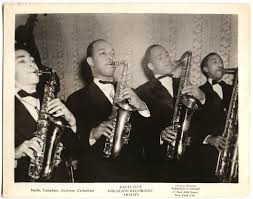
Role of the lead trumpet
Setting the standard for articulations, note duration, dynamics, etc, makes it much easier for lead alto to get on the same track. Consistency always wins.
You have your job to do, and that often will involve the lead alto deferring to you. But there are some cases in which you must work equally with alto 1. Usually, this means unison lines. Ideally the arranger doesn’t give a unison line to trumpet 1 and alto 1, but when it happens you must pull back a little and listen in to match. The right of way still goes to you, but it’s closer to a 50/50 split than usual.
On more “contemporary” or orchestral-minded pieces, the lead trumpet loses its traditional role and is becomes more equal to other trumpets and other instruments. In these compositions, you must balance your typical responsibilities with the need to listen for lead alto and find out how you fit into their intertwining melodic lines. Mixed voicings are found more often in this music, including interconnected setups. As in, instead of perfectly ordered vertical voicings, you might find alto 1 taking the slot of tpt 2. Overlapping voicings are also possible, where tpt1 doubles alto1 at the same octave as part of a larger voicing that aims to blend the instrument timbres in a more expressionistic way rather than use them as a statement sound. You’ll also run into cross voicing situations where the lead alto will be on higher notes than you for extended periods of time. Always listen, and always balance.
A happy lead alto has a trustworthy and supportive section underneath them. They are never pushed by the rhythm section, they have a reliable lead trumpet to ultimately defer to, and they have a director who helps guide them through rehearsal. If these aspects are locked in, the lead alto can effectively do their job and the big band can be all the stronger for it.
Browse tunes featuring alto sax solos Commission a transcription, new arrangement, or original composition featuring alto sax
Commission a transcription, new arrangement, or original composition featuring alto sax
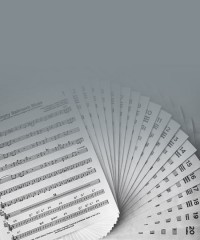
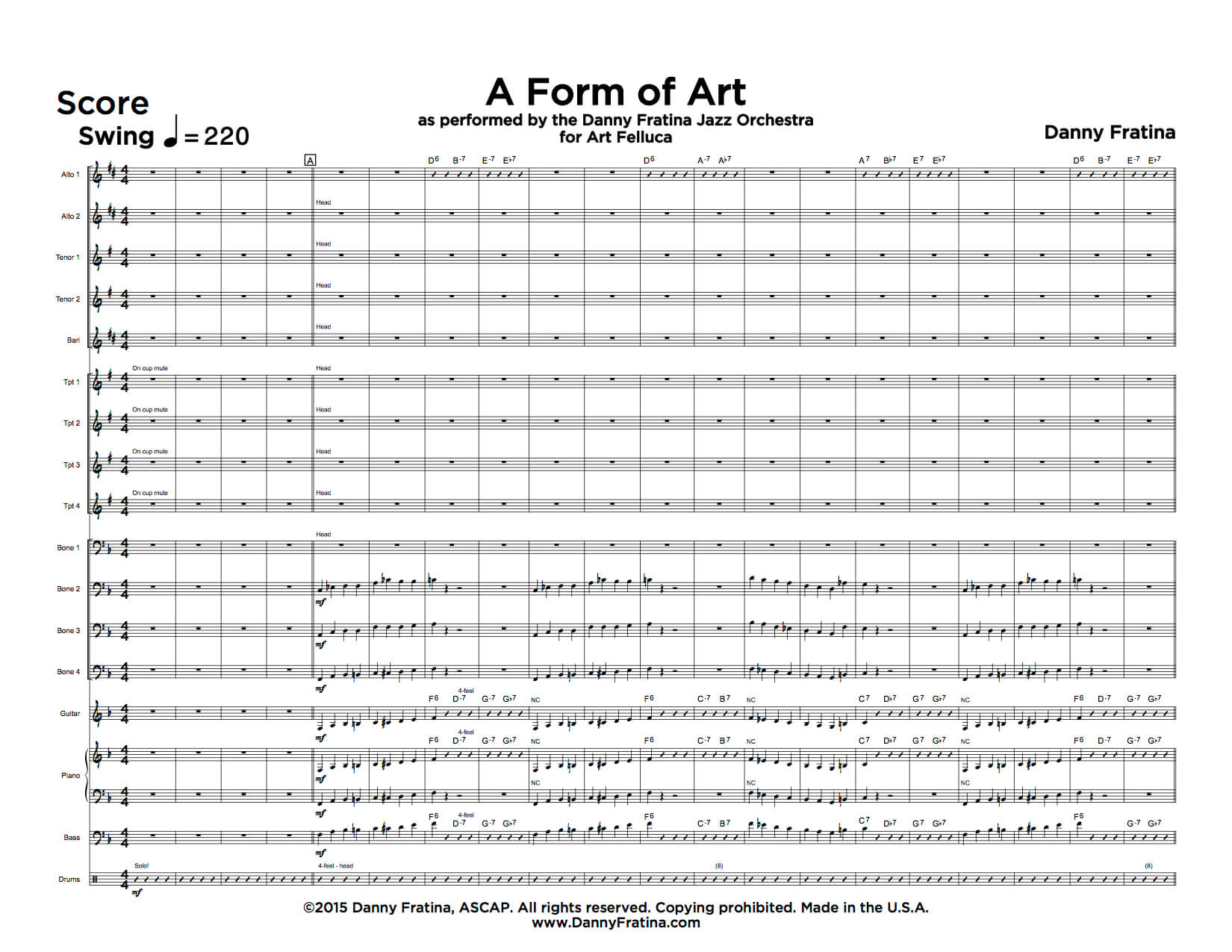
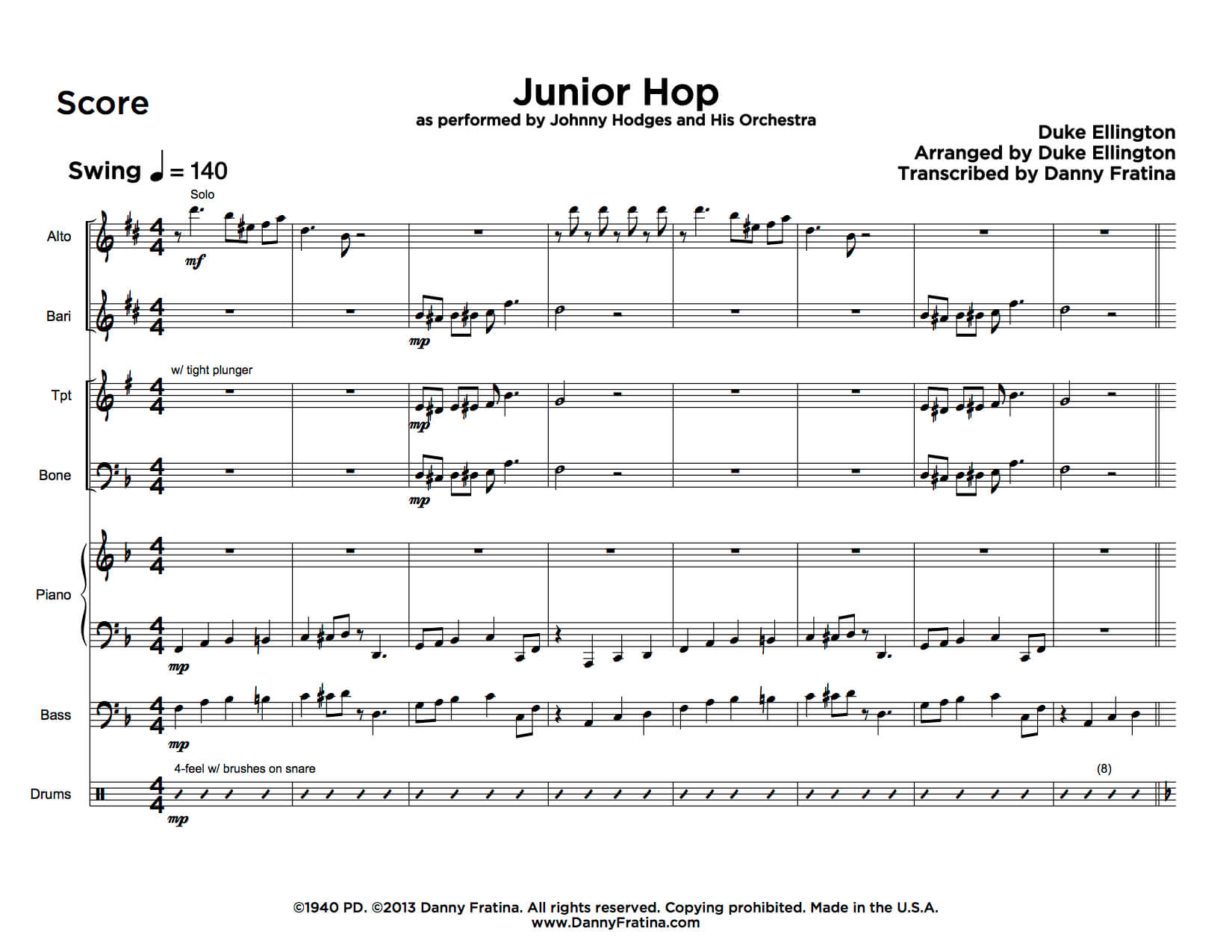
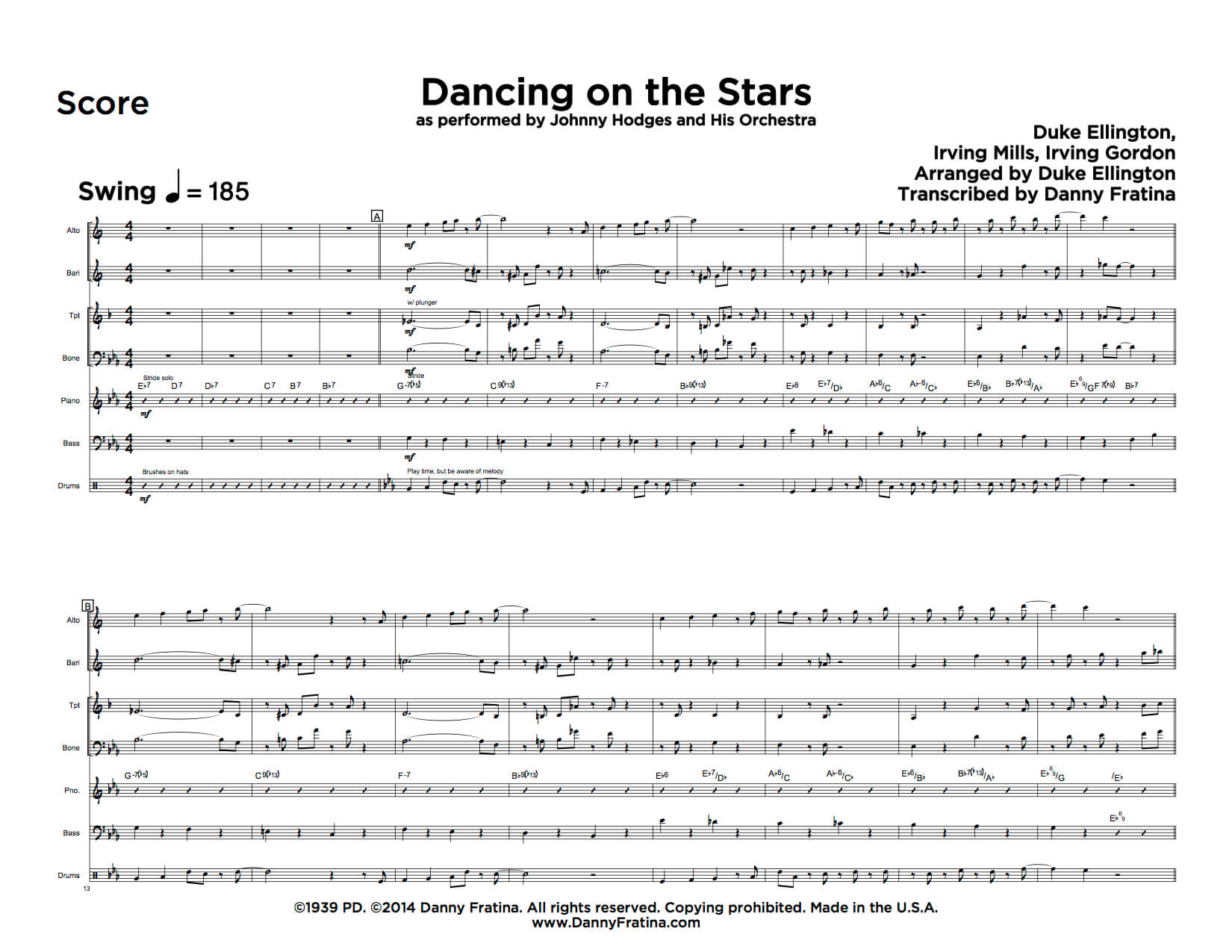

Leave A Comment